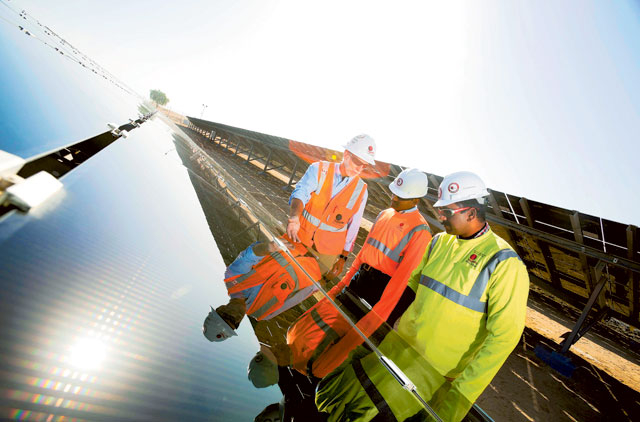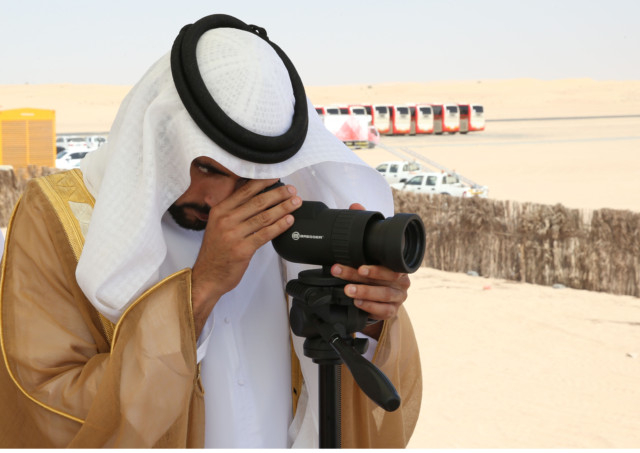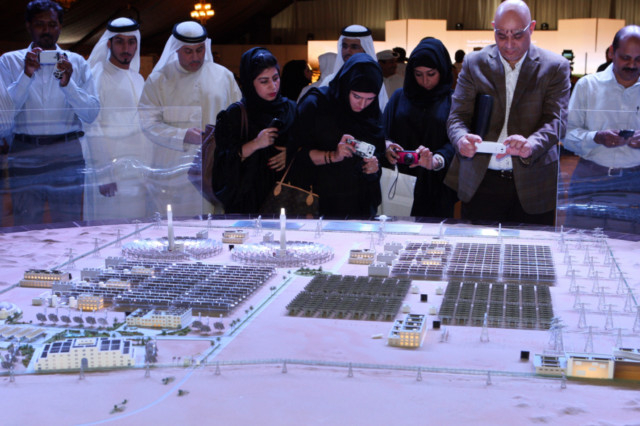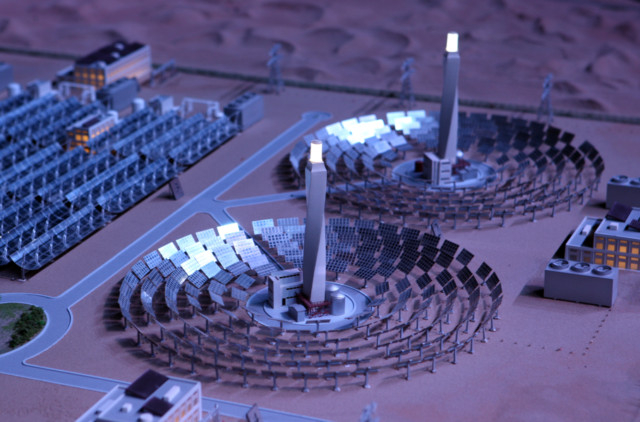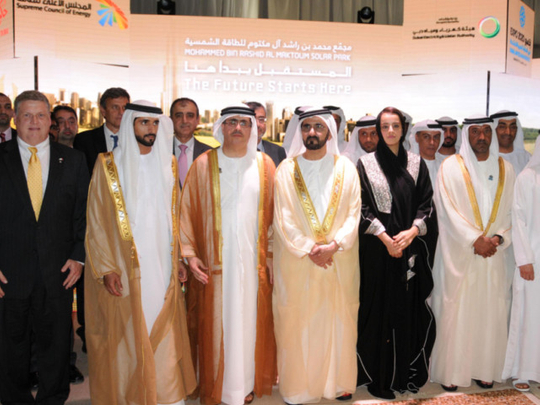
Dubai: Leaders and energy officials were witness to history in the making yesterday as Dubai flipped the switch on a its new Dh120 million solar power station to feed electricity harnessed from the sun into the Dubai power grid.
Achieving a major milestone on the way to sustainable development, bolstering Dubai’s power generating capacity will help the emirate on its journey to diversify energy sources.
A 13 megawatt solar project, phase one of the 280,000 square metre Shaikh Mohammad Bin Rashid Solar Park, was inaugurated by His Highness Shaikh Mohammad Bin Rashid Al Maktoum, Vice-President and Prime Minister of the UAE and Ruler of Dubai, at Seih Al Dahal, 50 kilometres south of Dubai.
The project, undertaken by Dubai Supreme Council of Energy (DSCE) and operated by Dubai Electricity and Water Authority (Dewa), is expected to generate 24 million kilowatts of power per year.
Announced in January 2012, the solar park is expected to generate 1,000 megawatts of power by 2030 and will be completed over several phases.
Marking World Energy Day, Shaikh Mohammad on Tuesday also launched phase two of the project, which is a 100 megawatt installation to be built in public-private partnership.
Work on phase two will start in six months and is expected to be complete in three years.
The solar park is part of Dubai Integrated Energy Strategy 2030 that aims to have an energy mix consisting of five per cent solar, 12 per cent nuclear, 12 per cent clean coal and 71 per cent natural gas by 2030.
“This is the first milestone on the way to achieving our energy strategy. This plant will go a long way in setting the trend for non-conventional energy resources in the region and by 2020 we will have more than 1 per cent of our electricity generated through solar energy,” Saeed Mohammad Al Tayer, vice-chairman of DSCE and managing director and CEO of Dewa, said.
Though phase one was constructed by energy firm First Solar, the project is fully funded and owned by DSCE.
However, the Dh700 million phase two of the park will be carried out in a public-private partnership model, with 51 per cent to be owned by the government and 49 per cent by a private firm.
“We have created a market for sustainable energy projects by investing in the solar park and showed to the region that such projects could be successfully implemented. Now we want to explore the public-private partnership model for next. Currently, we are carrying out surveys for the project and finalising the guidelines and in the next six months we will be issuing the tenders,” said Ahmad Butti Al Muhairbi, secretary-general of DSCE.
The sustainability programme also includes building a self-sustaining solar-powered landmark tower at the park.
Apart from building the infrastructure, the project also aims to instil values of sustainability among local population while also building local capacity.
“As many as eight Emirati engineers are joining a capacity building programme that will ensure the engineers get first-hand knowledge in installing solar plants and harnessing solar power,” said James Hughes, CEO, of First Solar that worked on phase one.
In the next phases, Dewa and DSCE are jointly exploring options to have rooftop solar installations that can further help in reducing dependence on fossil fuels.
“Solar energy is the most abundant resource that UAE has and I believe it is the best and most sustainable way to generate electricity in the region. With the Mohammad Bin Rashid Solar Park, Dubai has set a new trend and benchmark for the region,” added Hughes.
The solar plant uses a combination of photovoltaic and concentrated solar power technologies.
In phase one 152,000 photocells have been installed and connected to 13 step-up transformers in inverter buildings. The plant reduces Co2 emissions by 15,000 tonnes annually.
The solar park, when completed, will be one of the largest solar installations in the region.


